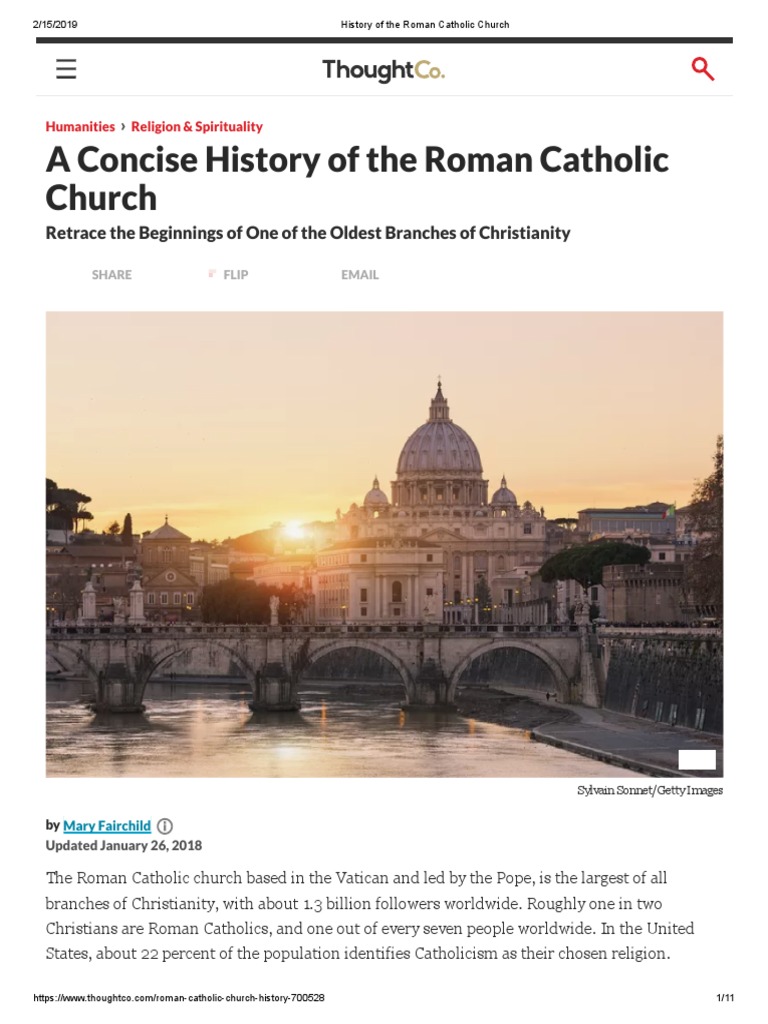The Catholic Church, an institution of profound historical and theological depth, has served as a cornerstone of Western civilization since its inception. Its evolution from a small sect of Jesus Christ’s followers amidst the Roman Empire to a global institution is an intricate tapestry woven from faith, politics, culture, and human endeavor.
In the nascent years, the movement that would eventually become known as Christianity emerged within the broader cultural and political milieu of the Roman Empire. The death and resurrection of Jesus Christ in the early first century galvanized his disciples, leading to the formation of communities centered around his teachings. Initially, these gathered groups were marked by an informal structure, where local leaders, often called elders or bishops, guided the community. The early Christians faced persecution, which fortified their resolve and unity. The Roman authorities viewed this burgeoning faith as a threat, highlighting the church’s radical divergence from traditional Roman religious practices.
As centuries passed, a noticeable shift occurred. The conversion of Emperor Constantine in the early fourth century marked a paradigm shift for Christianity. With the Edict of Milan in 313 CE, Constantine granted religious freedom, enabling Christians to worship openly. This pivotal moment not only legitimized Christianity but also set the stage for its entwinement with political power. Following this, the First Council of Nicaea in 325 CE laid the groundwork for the establishment of orthodoxy, forming an ecclesiastical framework that would govern the Church’s beliefs and practices.
As the Catholic Church grew, so did its influence. The roles of the clergy evolved, with the bishop of Rome, known as the pope, rising to prominence as a spiritual leader. The concept of papal supremacy became entrenched during the Middle Ages, asserting that the pope held divine authority over both ecclesiastical and temporal matters. This period, characterized by the establishment of monastic orders, such as the Benedictines and Franciscans, contributed to the Church’s role in preserving knowledge and culture during tumultuous times. Monasteries became centers of learning and piety, ensuring that the teachings of Christianity remained accessible amidst widespread societal upheaval.
Furthermore, the Church’s interaction with European monarchies forged a symbiotic relationship, where kings sought the Church’s blessing to legitimize their reigns. In return, the Church garnered wealth and power, acquiring vast lands and exerting influence over educational and social initiatives. This era was also marked by the Crusades, which reflected the Church’s ambition to reclaim the Holy Land and spread Christianity, a quest that had profound implications for interfaith relations.
However, the Catholic Church was not without internal strife. The late Middle Ages heralded periods of corruption and decadence within the clergy, prompting factions within Christianity to call for reform. Movements led by figures like John Wycliffe and Jan Hus laid the groundwork for what would eventually culminate in the Protestant Reformation in the 16th century. This seismic shift would fracture the monolithic nature of Catholicism, prompting a reevaluation of the Church’s role in a rapidly changing world.
In response to the growing dissent, the Catholic Church convened the Council of Trent (1545-1563), which sought to address the issues raised by the Reformers while reaffirming core doctrines. The Council not only implemented reforms within the Church but also established a clearer articulation of Catholic theology, integrating practices that emphasized the importance of tradition alongside Scripture.
The Enlightenment period introduced new philosophical ideas that further challenged the Church’s authority. Rationalism and empiricism prompted many thinkers to question the sacramental and supernatural aspects of faith. Yet the Catholic Church adapted, emphasizing the relationship between faith and reason, ultimately reaffirming belief through the lens of rationality. The emergence of the modern era brought significant changes, such as the rise of secularism, but also marked the Church’s continued relevance in ethical and moral discourse.
In the 19th and 20th centuries, the Catholic Church faced monumental challenges. The industrial revolution, world wars, and socio-political upheaval transformed societies profoundly, yet the Church endeavored to provide guidance. The Second Vatican Council (1962-1965) emerged as a crucial moment in the Church’s history, promoting engagement with the modern world. This council encouraged dialogue with other faiths and emphasized the laity’s role within the Church, dramatically altering its pastoral approach.
The global expansion of the Catholic Church in the latter half of the 20th century facilitated a diverse expression of faith that transcended cultural boundaries. It adapted its practices to resonate with local traditions while maintaining the essence of Catholic teaching. This phenomenon has resulted in a vibrant, multicultural Church, reflecting a tapestry of diverse theological perspectives across the globe.
In contemporary times, the Catholic Church navigates myriad challenges, including the secularization of societies, moral crises, and the need for reconciliation within its ranks. The clergy sexual abuse crisis has profoundly impacted the Church’s credibility, necessitating a renewed commitment to integrity and accountability. Simultaneously, the Church strives to be a voice for social justice, advocating for the marginalized and addressing pressing global issues such as poverty, climate change, and human rights.
In summation, the Catholic Church’s evolution from its nascent beginnings in the Roman Empire to its present incarnation shares a narrative rich with complexity and resilience. It serves as a testament to faith’s transformative power throughout history. The Catholic Church remains a dynamic institution, continuously adapting while holding steadfast to its core beliefs, illustrating that its journey is far from over.



